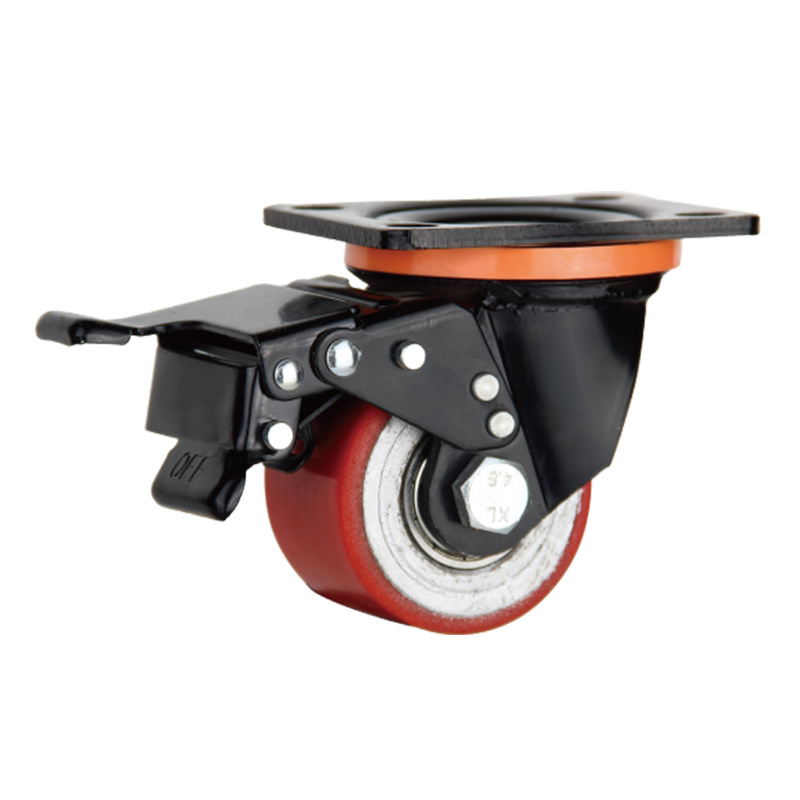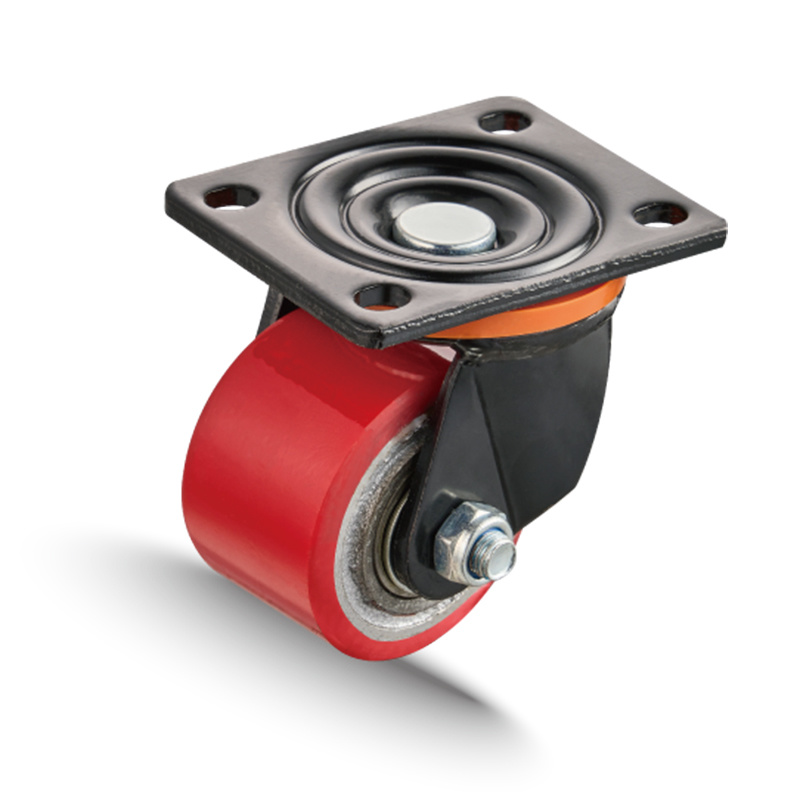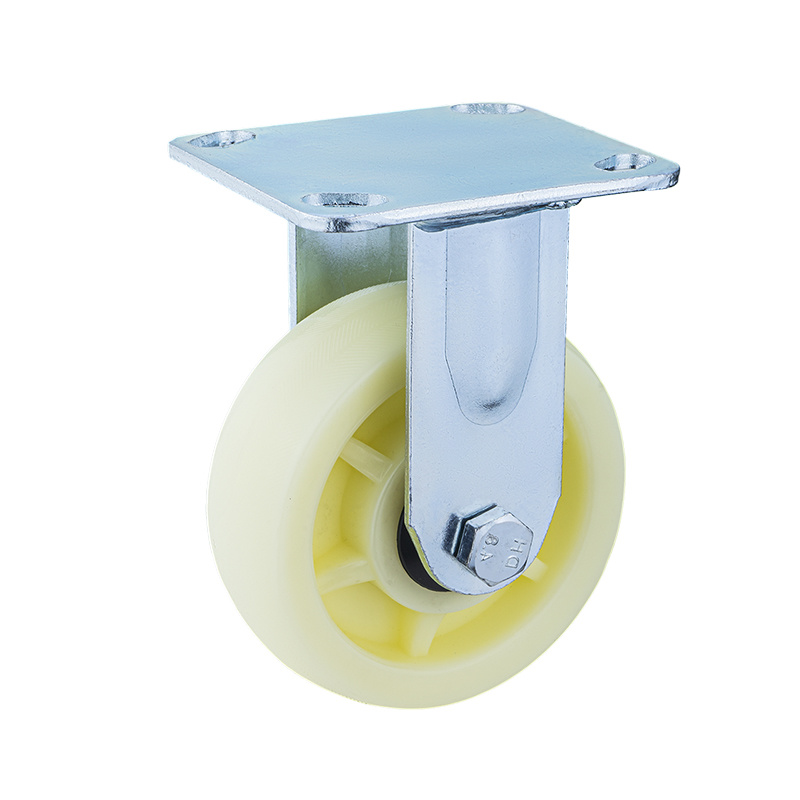BLOG
Industrial Trolley Casters vs. Traditional Casters: Which is Better?
2025-06-21
Industrial Trolley Casters vs. Traditional Casters: Which is Better?
As businesses continue to evolve and adapt to the demands of modern logistics and material handling, the choice of casters plays a pivotal role in enhancing operational efficiency. In this article, we delve into the nuanced comparisons between industrial trolley casters and traditional casters. By understanding their features, benefits, and ideal use cases, we aim to guide you towards making an informed decision when it comes to selecting the right type of caster for your specific application.
Table of Contents
- Understanding Casters: A Brief Overview
- What are Industrial Trolley Casters?
- What are Traditional Casters?
- Key Differences Between Industrial Trolley Casters and Traditional Casters
- Benefits of Industrial Trolley Casters
- Benefits of Traditional Casters
- Ideal Use Cases for Each Type of Caster
- How to Choose the Right Casters for Your Needs
- Maintenance and Care for Longer Lifespan
- Conclusion
- FAQs
Understanding Casters: A Brief Overview
Casters are wheeled devices that are mounted on the bottom of various equipment, enabling easy mobility. They can be categorized into different types based on their design, materials, and intended usage. At their core, casters are essential components in environments where heavy objects need to be moved efficiently and safely.
What are Industrial Trolley Casters?
Industrial trolley casters are specifically designed for heavy-duty applications. Typically made from robust materials such as steel or heavy-duty plastic, these casters are engineered to carry substantial loads while offering smooth maneuverability. They are ideal for use in warehouses, factories, and other industrial settings where safety and efficiency are paramount.
What are Traditional Casters?
Traditional casters, on the other hand, are generally designed for lighter loads and are often found on furniture, carts, and lightweight equipment. They can be made from various materials, including rubber, plastic, or metal, and are suitable for both indoor and light outdoor use. While they may excel in applications requiring less mobility, they often lack the durability and load-bearing capacity of industrial trolley casters.
Key Differences Between Industrial Trolley Casters and Traditional Casters
Understanding the differences between industrial trolley casters and traditional casters is crucial for selecting the right type for your needs. Here are the key distinctions:
Load Capacity
Industrial trolley casters typically have a higher load capacity, often exceeding 1,000 pounds per wheel, making them suitable for heavy machinery and large products. Traditional casters, in contrast, usually support far less weight, generally ranging from 100 to 500 pounds.
Material Composition
Industrial casters are constructed from heavy-duty materials such as hardened steel, ensuring durability and resistance to wear and tear. Traditional casters may use lighter materials like plastic or softer rubber, which can degrade quickly under heavy stress.
Wheel Size and Design
The wheel design and size of industrial trolley casters are engineered for smooth operation over rough surfaces, while traditional casters often feature smaller wheels that may struggle with uneven terrains.
Environmental Suitability
Industrial trolley casters are designed for harsh environments, often featuring weather-resistant coatings and seals. Traditional casters may not withstand extreme conditions, making them less suitable for industrial applications.
Benefits of Industrial Trolley Casters
The advantages of using industrial trolley casters are numerous:
Enhanced Load Management
With their high load capacity, industrial trolley casters provide more efficient load management, reducing the risk of accidents due to overloading.
Improved Maneuverability
The design and material quality of industrial casters offer exceptional maneuverability, even with heavy loads. This factor is vital in busy settings like warehouses.
Durability and Longevity
Industrial trolley casters are built to last. Their robust construction means they can withstand daily wear and tear, making them a cost-effective choice over time.
Versatility in Applications
These casters can be used in various settings, from manufacturing plants to logistics centers, showcasing their versatility.
Benefits of Traditional Casters
Traditional casters also provide notable benefits in suitable applications:
Cost-Effective
Generally cheaper than their industrial counterparts, traditional casters present a cost-effective solution for light-duty applications.
Lightweight and Easy to Install
The lightweight nature of traditional casters makes them easier to handle and install, which can save time in setup and relocation.
Variety of Styles and Designs
Traditional casters come in various designs and styles, making them suitable for aesthetic applications where functionality and appearance are important.
Ideal Use Cases for Each Type of Caster
Choosing the right caster is contingent upon the specific application.
Industrial Trolley Casters Use Cases
- Heavy machinery transport
- Warehouse stacking systems
- Industrial carts and trolleys
- Automotive service equipment
Traditional Casters Use Cases
- Office furniture
- Lightweight carts and trolleys
- Home appliances
- Display units in retail settings
How to Choose the Right Casters for Your Needs
When selecting casters, consider these factors:
Load Requirements
Assess the weight of the items you need to move. This will help you determine if you need industrial trolley casters or if traditional casters will suffice.
Surface Conditions
Evaluate the types of surfaces the casters will traverse. Rough or uneven surfaces may necessitate industrial options for optimal performance.
Environment
Consider environmental factors like temperature, humidity, and exposure to chemicals. Industrial casters often come with protective features suited for harsh conditions.
Aesthetic Considerations
If appearance matters, traditional casters might offer more design options that align with your brand or décor.
Maintenance and Care for Longer Lifespan
Proper maintenance of casters can significantly extend their lifespan. Here are some tips:
Regular Cleaning
Dust and debris can affect caster performance. Regular cleaning helps maintain their functionality.
Lubrication
Periodically lubricate moving parts to ensure smooth operation and reduce friction.
Inspection
Regularly inspect casters for wear and tear. Early detection of issues can prevent larger problems down the road.
Conclusion
Both industrial trolley casters and traditional casters serve vital roles in material handling and mobility. The choice between the two largely depends on your specific needs, including load capacity, environmental conditions, and intended use. By understanding their differences and respective benefits, we can make informed decisions that enhance efficiency and safety in various applications. Ultimately, investing in the right type of caster will yield significant long-term benefits, ensuring smooth operations and effective resource management in your operations.
FAQs
1. What is the load capacity of industrial trolley casters?
Industrial trolley casters typically support loads exceeding 1,000 pounds per wheel, making them ideal for heavy-duty applications.
2. Are traditional casters suitable for outdoor use?
While some traditional casters may be used outdoors, they are generally not designed for harsh conditions and may degrade quickly.
3. How do I know which caster type is right for my application?
Consider your load requirements, surface conditions, and whether aesthetics play a role in your decision.
4. Can I mix and match different types of casters on one cart or trolley?
Mixing casters can lead to uneven weight distribution and performance issues. It’s best to use the same type for consistency.
5. How often should I maintain my casters?
Regular maintenance, including cleaning and lubrication, should be done at least once a month or more frequently depending on usage and environment.
Key words:
RELATED NEWS
Low Profile Heavy Duty Casters: The Secret to Smooth Transport in Warehouses
2025-08-16
Understanding Heavy Duty Industrial Casters: The Backbone of Efficient Mobility
2025-08-09
Essential Safety Tips for Using Heavy Duty Casters: Maximize Efficiency and Minimize Risks
2025-08-02








